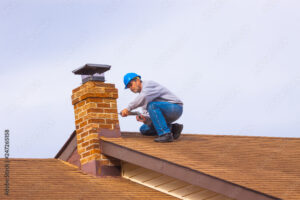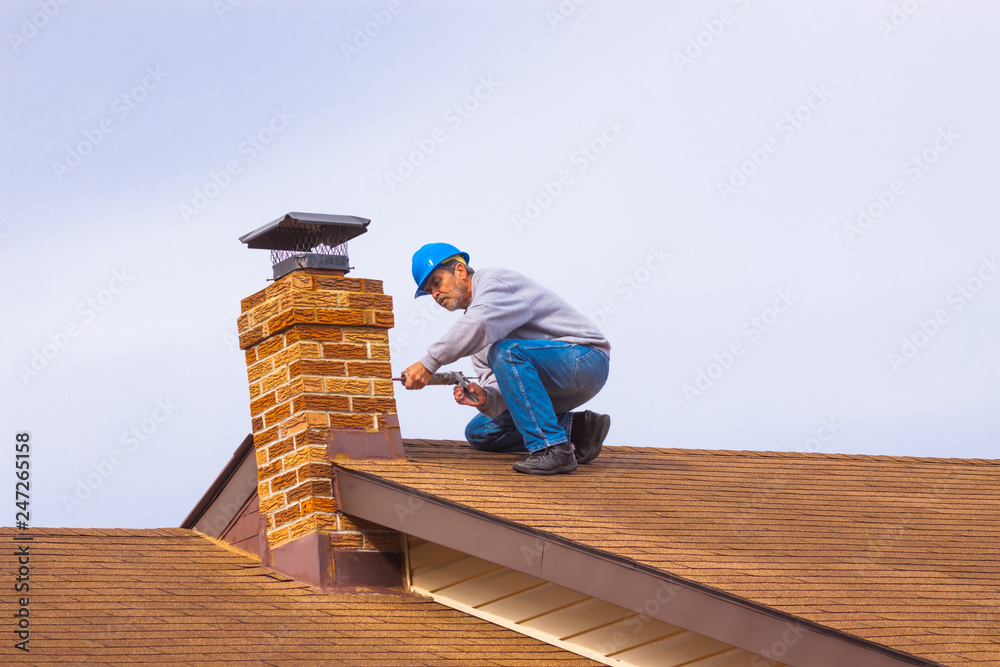Clean Chimney Sweep Charleston is a professional chimney cleaning service provider. They clean out chimneys to remove dangerous creosote buildup. They can begin from inside the flue and work their way up, or they can start at the roof’s chimney access point and work down. Climbing boys were young children who worked as chimney sweeps. It was not until after much effort by various groups that steps were taken to end the barbarity of this practice.

Children were used to cleaning chimneys because their small size allowed them to enter spaces too narrow for adults. They were called climbing boys; many joined the profession at four or five. They were either sold to master sweeps by their poor parents or bought from orphanages. The children were regarded as chimney sweep apprentices and treated like indentured servants.
The work was extremely hazardous. Children could get jammed in chimney flues, suffocate, die from the fumes, or burn themselves. They also suffered from soot-related health issues, including pulmonary problems and respiratory illnesses due to inhalation of the soot, grime, and smoke. In addition, they were prone to Chimney Sweep’s Cancer, a rare and painful condition in which the scrotum develops soot wart-like tumors.
Eventually, the profession fell out of favor, and people began to use mechanical chimney sweeps instead of human children. However, it took until 1875 to pass a law that stopped the practice of employing children as chimney sweeps in England.
The law was passed after George Brewster became stuck in a Fulbourn Hospital chimney and was killed in an attempt to free him. The boy’s death helped spur public outrage and the law’s passage.
Even after the laws were passed, there were still a few master chimney sweeps who used child labor. Most of these abused and mistreated the children, which resulted in terrible injuries and deaths.
In modern times, a chimney sweep is responsible for sweeping away soot and a coating called creosote. This buildup comes from burning wood or coal in a fireplace or wood stove and can clog chimneys and reduce the efficiency of the fire and the home’s heating system. Chimney sweepers use a brush to scrape this flammable material from the inside of the chimney and out through the fireplace.
In Britain and mainland Europe, the image of a Victorian-era chimney sweep, similar to a four-leaf clover, still symbolizes good luck. The tradition of a chimney sweep carrying a pig through the streets on New Year’s Day has also become a common part of holiday celebrations.
A chimney sweep can only do his job with a few key tools. One of the most important tools is a wire brush, which allows them to get into tight spaces and clean nooks and crannies. Another necessary tool is a ladder that can be adjusted to different heights and has sturdy steps, ensuring safety when climbing up and down. The chimney sweep should also wear a dust mask to protect themselves from harmful fumes.
A powder-based creosote remover is necessary for chimney sweeps, as it helps prevent the buildup of this dangerous compound within airtight chimneys and prevents house fires. The chimney sweep can also use a chemical cleaner to help increase airflow within zero-clearance fireplaces, a popular trend in new homes.
Lastly, the chimney sweep needs a vacuum system that can handle all the messes and pollutants created during cleaning. The best choice is an industrial-grade chimney sweep vacuum with multiple filters to handle different dirt and chemicals.
It’s also important to have a telescopic pole to reach the chimney’s hard-to-reach areas. It can be purchased in various lengths for different vents, but the most common is 15 feet. Using a telescopic rod can reduce the time it takes to clean a chimney, increasing efficiency and customer satisfaction.
Chimney sweeps can also use a video camera to inspect chimneys before starting the work. Before they start cleaning, it can help them spot any issues, such as birds nesting inside or cracks in the chimney. It can also give customers a better idea of what the job will entail and boost sales by promoting transparency.
Lastly, a chimney sweeper can use an app such as Asana or ClickUp to break the various tasks of chimney cleaning into smaller sub-tasks that can be assigned to team members. These apps can also track project progress and encourage accountability for the entire team. They can create knowledge bases to update the latest chimney sweep techniques section. It can lead to greater customer satisfaction and increased referrals for the business.
When working on your chimney, it’s important to wear protective gear. A face mask helps prevent particles from entering your lungs during cleaning and can also help reduce eye irritation. Overalls or dedicated workwear are often recommended to protect yourself from dust and dirt.
Chimney sweeps use various tools, including brushes, to scrub away the soot and creosote that build up on the walls and flue lining of a fireplace chimney and wood stove. These highly flammable materials can cause chimney fires, leading to structural damage and smoke pollution in your home.
The chimney sweep’s job is to remove these toxic deposits from a fireplace or wood stove chimney to keep fires burning safely and efficiently. These debris and creosote deposits can form from burning wood, fossil fuels, or tar. The faster the creosote builds up, the higher the risk of chimney fires and structural damage.
Besides sweeping chimneys, chimney sweeps perform various other services to ensure your fireplace and chimney are safe. These include installing a spark arrestor and chimney cap, repairing chimney crowns, cleaning dryer vents, repairing chimney leaks, and more. If your chimney is damaged, the sweep can advise you on the best action to take, including rebuilding or replacing the vent if necessary.
Before the chimney sweep arrives, you should prepare by moving any furniture a few feet away from the fireplace and covering it with plastic or a drop cloth. It’s also a good idea to turn off the fireplace and open any other fireplace dampers.
As the chimney sweep works, a dusty mess may accumulate on furniture, floors, and other surfaces in your home. Chimney sweeps will usually bring a vacuum cleaner with a dual HEPA filter to help reduce the dust in your home while cleaning the chimney. They will also have a special tool to blow out the creosote and debris from the vent.
If you’re considering hiring a chimney sweeper, look for credentials like CSIA certification and business liability insurance. It would be best if you also asked to see photos of previous jobs and read reviews before deciding.
When most people think of chimney sweeps, they envision the character Bert from Mary Poppins dancing along rooftops and singing “Chim Chim Cheree.” The reality is that chimney sweepers are real-life business owners who work hard to provide an invaluable service for their clients. They must adhere to certain policies to keep themselves and their employees safe. These policies include commercial insurance, a type of small business contractor’s insurance that provides liability coverage if something goes wrong on a job site.
Chimney sweepers should always look for insurance policies specifically designed for their trade. This type of policy will help to ensure that their needs are fully covered and that any gaps in coverage are eliminated. This policy will also provide a range of benefits, including public liability cover, which can protect them if something goes wrong at a customer’s property. For example, if the chimney sweeper accidentally trips over a ladder and falls into their client’s expensive carpet or spills a pot of soot onto their antique sofa, the client may file a lawsuit against them. The chimney sweeping company could be very costly without the proper commercial insurance.
A good commercial insurance agent can provide chimney sweepers with a range of handpicked insurance policies designed for their business. These agents can talk through each option with them and explain the details. They can even help them compare quotes from several insurers to find the best deal.
Another type of insurance that is important for chimney sweepers to have is workers’ compensation. It is a legal requirement in most states and will pay out if an employee gets injured or sick. It will also help to protect the business from legal action if an employee is hurt or killed in the workplace.
Other types of insurance that may be useful for chimney sweepers include professional indemnity, tools in transit, and personal accident and sickness policies. These are a few of the most popular options, but there are many more. By choosing an independent insurance agent, chimney sweepers can be sure they are getting the best deals and the right types of coverage for their unique business.

